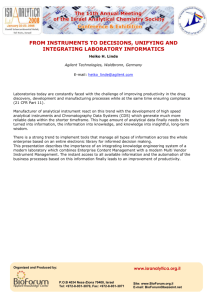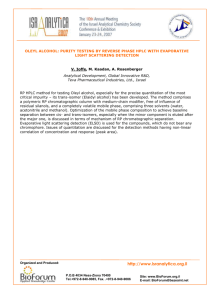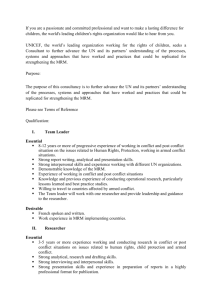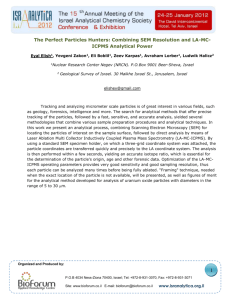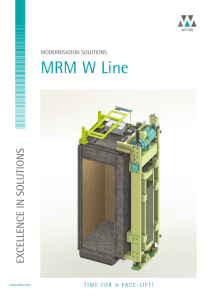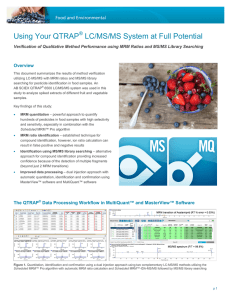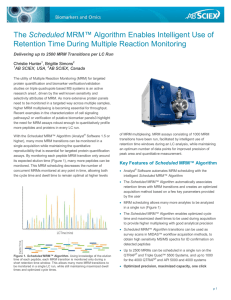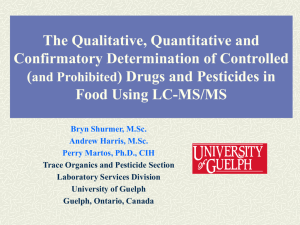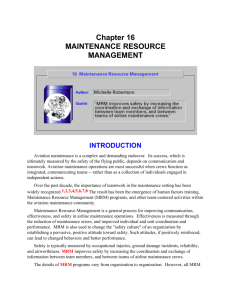A Compound-based Approach to Simplify Method Development and
advertisement
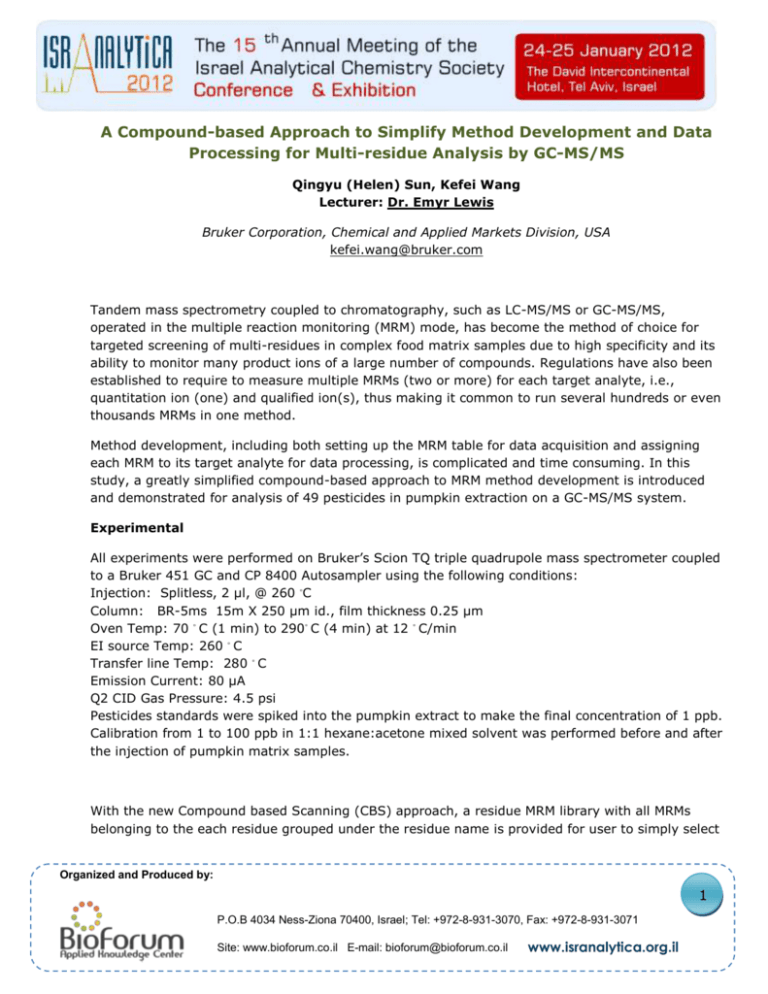
A Compound-based Approach to Simplify Method Development and Data Processing for Multi-residue Analysis by GC-MS/MS Qingyu (Helen) Sun, Kefei Wang Lecturer: Dr. Emyr Lewis Bruker Corporation, Chemical and Applied Markets Division, USA kefei.wang@bruker.com Tandem mass spectrometry coupled to chromatography, such as LC-MS/MS or GC-MS/MS, operated in the multiple reaction monitoring (MRM) mode, has become the method of choice for targeted screening of multi-residues in complex food matrix samples due to high specificity and its ability to monitor many product ions of a large number of compounds. Regulations have also been established to require to measure multiple MRMs (two or more) for each target analyte, i.e., quantitation ion (one) and qualified ion(s), thus making it common to run several hundreds or even thousands MRMs in one method. Method development, including both setting up the MRM table for data acquisition and assigning each MRM to its target analyte for data processing, is complicated and time consuming. In this study, a greatly simplified compound-based approach to MRM method development is introduced and demonstrated for analysis of 49 pesticides in pumpkin extraction on a GC-MS/MS system. Experimental All experiments were performed on Bruker’s Scion TQ triple quadrupole mass spectrometer coupled to a Bruker 451 GC and CP 8400 Autosampler using the following conditions: Injection: Splitless, 2 μl, @ 260 ◦C Column: BR-5ms 15m X 250 μm id., film thickness 0.25 μm Oven Temp: 70 ◦ C (1 min) to 290◦ C (4 min) at 12 ◦ C/min EI source Temp: 260 ◦ C Transfer line Temp: 280 ◦ C Emission Current: 80 μA Q2 CID Gas Pressure: 4.5 psi Pesticides standards were spiked into the pumpkin extract to make the final concentration of 1 ppb. Calibration from 1 to 100 ppb in 1:1 hexane:acetone mixed solvent was performed before and after the injection of pumpkin matrix samples. With the new Compound based Scanning (CBS) approach, a residue MRM library with all MRMs belonging to the each residue grouped under the residue name is provided for user to simply select Organized and Produced by: 1 P.O.B 4034 Ness-Ziona 70400, Israel; Tel: +972-8-931-3070, Fax: +972-8-931-3071 Site: www.bioforum.co.il E-mail: bioforum@bioforum.co.il www.isranalytica.org.il the target residue to add to the method. More importantly, the compound-based approach eliminates need for building a separate data processing method as the processing method will be automatically generated from the acquisition method. Moreover, the new approach also implements a timed compound acquisition for MRM dwell time optimization and eliminates the need for chromatographic segmentation. The GC-MS/MS method has shown excellent linearity all pesticides from 1.0 to 100 ppb with r2>0.997 for all pesticides before and after injections of matrix samples. The instrument robustness was demonstrated by 10 consecutive injections of 1 ppb spikes with RSD mostly between 4-8%. Organized and Produced by: 2 P.O.B 4034 Ness-Ziona 70400, Israel; Tel: +972-8-931-3070, Fax: +972-8-931-3071 Site: www.bioforum.co.il E-mail: bioforum@bioforum.co.il www.isranalytica.org.il
